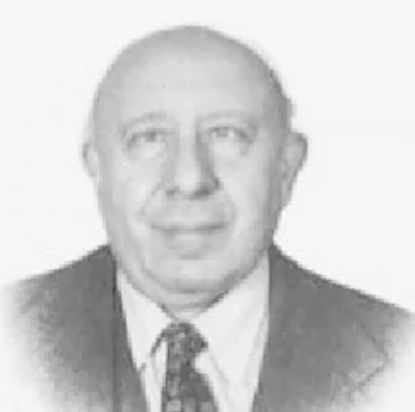Transfinite Life: Oskar Goldberg and the Vitalist Imagination [2017], p.vi-vii:
It is quite remarkable that one and the same book, Goldberg’s Reality of the Hebrews, could be read by Thomas Mann as a Jewish version of fascist myth-making and by H. G. Adler as a blueprint for creating a utopian social order through the power of “intuition,” the same power that was revealed in the ancient world’s mythic imagination. Goldberg was clearly a figure who elicited extreme reactions from those who read him or knew him personally. It would certainly be an exaggeration to say that his work served as a 'Rorschach test' for his generation. However, it offers us a fascinating window on the powerful forces that can be unleashed—both destructive and creative—when the 'givenness' of reality is called into question in the name of a radically transfigured future.

p.xiv:
Alluding to the ancient historian Josephus’s description of the “three sects” of the Jewish world of his day (Pharisees, Sadducees, and Essenes), the modern Jewish historian Gershom Scholem identified three Jewish “sects” in Weimar Germany: the one associated with art historian Aby Warburg’s research library in Hamburg, the group of political philosophers and social scientists at the Institute of Social Research in Frankfurt, and the circle around Oskar Goldberg in Berlin.6 Scholem, despite being a severe critic of Goldberg, thus testified to the historical significance of Goldberg’s appeal for a certain group of young German Jews in Weimar. What drew this group to Goldberg was a profound desire to reconnect to what Goldberg called “Urjudaism,” a form of militant communal existence that flourished when, according to the account in the book of Exodus, the people as a whole seemed to be gathered within the protective presence of their God, with the ark of the covenant in their midst and a column of fire leading them forward toward the promised land. [...] Goldberg’s ideas offered a number of young Jews a path to a vitality of experience that, unlike Zionism, seemed unsullied by the pragmatic exigencies of world politics.
p.xx:
From about 1927 until 1932, Goldberg was an important presence in the weekly meetings of the Philosophische Gruppe (“Philosophical Group”) in Berlin. The meetings were organized by his student and closest friend, Erich Unger, in whose Charlottenburg apartment they were held. They were attended by many of Berlin’s leading intellectuals, including Walter Benjamin, Alfred Döblin, Bertold Brecht, and Erich Engel, the director of the original production of Brecht’s Dreigroschenopfer (Three-Penny Opera). Frequently, fifty or sixty were in attendance. Erich Engel took notes at many of these meetings.
Wasserstrom (2007, p.62) suggests Oskar Goldberg influenced Hans Jonas in 'Marburg 1928', yet offers no evidence whatsoever from Jonas' correspondence nor works. As affluent Berlin Jewish intellectuals/philosophers in Berlin 1930-32, it is much more likely the Ludwig Edelsteins attended such meetings. Why? Because a number of Goldberg themes can be identified in the Big Book!* However, without deeper examination we should be cautious before assuming anything more than topical coincidence: other Weimar Jewish intellectuals were tranversing similar paths.
Recall also that Ludwig had been the roommate of a true Orientalist scholar (Heinrich Zimmer) for over four years at uni: by contrast, Goldberg was evidently a crank dilettante. Perhaps Emma entertained a passing curiosity in the magic circle around Goldberg? We cannot know for sure. But if Goldberg was already a negative example in their minds, why employ his tropes as positive examples? That question must be left aside, for now.
From personal experiences between 1921-3, Scholem came to loathe the Goldberg circle, although his repudiation of this particular species of Weimar mysticism (suggestively comparable to the Essenes) was formally academic rather than vindictively personal. Scholem derided the Goldberg-Kreis as "metaphysical magicians," but he was also sarcastic and dismissive towards other modern esotericists who approached him (on this side note, see Boaz Huss & Jonatan Meir, “The Light is Burning Pretty Low” in Correspondences 8, no. 1 [2020]: pp.45–72). Above all, Scholem demanded a philological basis for rigorous historical-critical models, i.e. serious scholarship: of course, the Edelsteins were Philologists with Ph.D's, the old school-mates of his own colleagues and friends. Emma had studied under a revered and monumental scholar, Eugen Täubler. So when they came to him in early 1938, exploring possibilities for this Rockefeller project -- w/ the expectation of a nationwide bestseller! -- we can well imagine Scholem's supportive but cautionary guidance. (Their earliest drafts reveal no tropes from mystical Judaism, whatsoever; a re-vamped basis of their project upon Philonic and Judeo-Hermetic concepts would follow their attendance at his New York lectures in the Spring of 1938, a turning which fully developed their crypto-Judaic thesis in the late Summer of that year.)
* On Goldberg traces, the list is rather long and requires further elucidation. For one example, compare G's Zelem Elohim as AA's Cosmic Dynamo; see this and this.